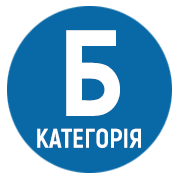COMMUNICATIVE-ACTIVITY APPROACH IMPLEMENTATION IN THE MODERN SYSTEM OF FOREIGN LANGUAGE LEARNING
DOI:
https://doi.org/10.25128/2415-3605.21.2.14Keywords:
communicative-activity approach, foreign language background of a student, active teaching methods, communicationAbstract
The review of communicative activity key features realization approach in a modern system of foreign languages learning has been carried out. It is defined that the communicative activity approach is based on the conceptual provisions of the activity and principles of communicative learning theory which gives students the opportunity to investigate problems independently, to observe, to analyze, to think critically, to argue and persuade the interlocutor as well as to make their own methods of learning a foreign language and to develop the ability to assess risks, to form constructive management of feelings, to use information and communication technologies, to interact in an adequate and creative way in all kinds of social and cultural contexts, to mobilize life experience, to apply basic / declarative knowledge and skills in practice, to create success situations, to form skills of self-control and mutual control. It is stated that modern paradigms of foreign language teaching outline the need to create conditions for active mastering of foreign language communication skills through the ability to understand and to achieve coherence in the reception and production of utterances within the communicatively significant speech formations. The main aspects of foreign language learning process on a communicative basis consider, namely: non-standard methods and forms of work that support students’ speech and mental activity and contribute to the maximum disclosure of their inner potential. It has been concluded that the effectiveness of communicatively oriented foreign language teaching depends on teachers’ understanding of the need to abandon authoritarian and scholastic methods and to apply teaching methods aimed at intensifying of the forming foreign language process and general cultural background of students in a creative way.
References
Бондар С. П. Компетентнісна спрямованість змісту і структури навчального предмета в умовах фундаменталізації освіти. Науковий часопис НПУ імені М. П. Драгоманова. Серія 17. Теорія і практика навчання та виховання. 2012. Вип. 20. С. 10–23.
Локшина О. І. Становлення компетентнісної ідеї в європейській освіті. Реалізація європейського досвіду компетентнісного підходу у вищій школі України: матеріали методологічного семінару. К.: Педагогічна думка. 2009. С. 19–33.
Родигіна І. В. Компетентнісно орієнтований підхід до навчання. Харків: Вид. група «Основа», 2008. 120 с.
Савченко О. Я. Компетентнісний підхід як чинник модернізації змісту освіти. Наука і освіта. Науково-практичний журнал Південного наукового центру НАПН України. Серія «Педагогіка». 2011. № 4. С. 13–17.
Сошенко С. М., Коломієць Б. С. Еволюція методів викладання іноземної мови. Педагогічний процес: теорія і практика. 2014. Вип. 1. С. 22–27. URL: file:///C:/Users/admin/Downloads/pptp_2014_1_5.pdf
Трубачева С. Е. Умови реалізації компетентнісного підходу в навчальному процесі. Компетентнісний підхід у сучасній освіті: світовий досвід та українські перспективи; під заг. ред. О. В. Овчарук. К.: К.І.С., 2004. С. 51–57.
Curriculare Vorgaben und Unterrichtsplanung / K. Ende u.a. München: Klett-Langenscheidt, 2013. 152 s.
K.-R. Bausch, H. Christ, H.-J. Krumm. Fremdsprachenunterricht. Tübingen: Francke Verlag Tübingen und Basel, 1995. 585 s.
Hugenschmidt B. Methoden schnell zur Hand. 66 Schüler- und handlungsorientierte Unterrichtsmethoden. Leipzig: Klett, Kallmeyer, 2011. 213 s.
Kramsch C. The Challenge of Globalization for the Teaching of Foreign Languages and Cultures. Electronic Journal of Foreign Language Teaching. 2014, Vol. 11. No. 2. P. 249–254. URL: https://eflt.nus.edu.sg/wp-content/uploads/2020/09/v11n22014/kramsch.pdf
Mattes W. Methoden für den Unterricht. Braunschweig, Paderborn, Darmstadt: Schöningh Verlag, 2012. 132 s.
Poetry Writing 2.0: Learning to Write Creatively in a Blended language Learning Environment. Electronic Journal of Foreign Language Teaching. 2016, Vol. 13. No. 1. P. 30–48. URL: https://eflt.nus.edu.sg/wp-content/uploads/2020/09/widodo-1.pdf
Schuetze U. Learning the Subjunctive in German: With or Without Technology? Electronic Journal of Foreign Language Teaching. 2015, Vol. 12. No. 1. P. 69–78. URL: https://e-flt.nus.edu.sg/wpcontent/uploads/2020/09/v12n12015/schuetze.pdf
Wie lernt man die Fremdsprache Deutsch? / S. Ballweg u.a. München: Klett-Langenscheidt, 2013. 108 s.






